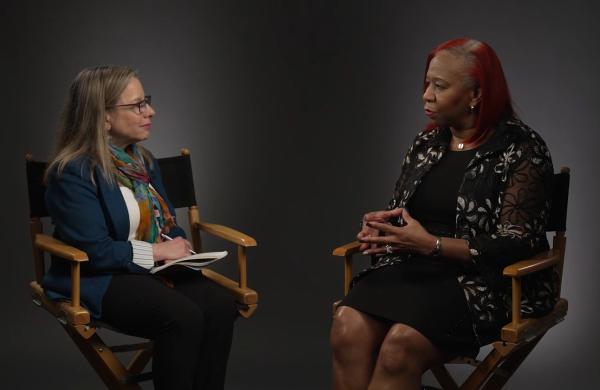The global financial crisis may be ravaging India’s stock market, but it has done little to dampen the enthusiasm of fund managers to enter the Indian market.
Two new asset management ventures have launched mutual funds since the fiscal year started in April, two others have won regulatory approval to enter the market, and fully 21 more firms have applications pending with the Securities and Exchange Board of India, or SEBI. This activity represents a vote of confidence in the long-term potential of the Indian fund market notwithstanding the recent rout on the Bombay Stock Exchange, which has knocked the benchmark Sensex 30 index down 58.1 percent for the year, as of late last month.
“The market is overcrowded in the short term, but for the medium term, there is enough room for all players. I estimate the fund industry to be three times the current size in ten years,” says Sameer Kamdar, CEO of ASK Asset Management, a Mumbai-based fund manager that is awaiting regulatory approval.
The competitive ferment is reflected in the India 20, Institutional Investor’s third annual ranking of the country’s biggest fund managers. Reliance Capital Asset Management Co., a unit of the Reliance–Anil Dhirubhai Ambani Group, rises one place to top the ranking for the first time, with $20.9 billion in assets as of March 31. A combination of strong performance, new products and improved distribution helped Reliance pull away from the pack and displace UTI Asset Management Co., the country’s oldest money manager, which launched India’s mutual fund industry in the 1960s. Reliance captured more than 15 percent of all inflows into new fund offerings in the year ended in March, including 56.6 billion rupees ($1.4 billion) for its Reliance Natural Resources Fund, which debuted in January. The company increased its market share by 3.5 percentage points during the year, to 17.7 percent, and has grown its assets by 150 percent since the end of 2006, the cutoff date for last year’s India 20. Reliance’s assets were 67 percent greater than those of runner-up ICICI Prudential Asset Management Co. (the complete 2008 listing of India's Top 20 Money Managers will be available online on November 20, 2008).
The latter firm, a joint venture between India’s ICICI Bank and U.K. insurer Prudential, climbs two places, to second, on the strength of a 61 percent rise in assets since December 2006, to $12.5 billion. HDFC Asset Management Co. remains in third place, followed by UTI. Birla Sun Life Asset Management Co. and SBI Funds Management move up one notch each, to fifth and sixth place, respectively, while Franklin Templeton Asset Management (India) slides two places, to seventh. Rounding out the top ten, Tata Asset Management Co. climbs one place, to eighth, DSP Merrill Lynch Fund Managers slips one slot, to ninth, and Kotak Mahindra Asset Management Co. gains one place, to tenth.
Assets of the India 20 surged 59.4 percent, to $116.5 billion, at the end of March, from $73.1 billion at the end of 2006.
All of those firms face a much tougher environment, at least in the short term, even if their prospects remain strong looking further ahead. Partly reflecting the sharp declines in equity prices, assets under management among Indian mutual funds declined by 12.1 percent in the first nine months of this year, to 5.5 trillion rupees, according to the Association of Mutual Funds in India. In dollar terms assets were down 26.8 percent, to $102.1 billion, reflecting the rupee’s slide against the U.S. unit.
But if the attitude toward stocks is cooling, enthusiasm about investing still appears to be gaining currency in the popular culture. Bollywood, India’s film industry, saw the release of a comedy, Saas Bahu Aur Sensex, or Mother-in-Law, Daughter-in-Law and Sensex, a family drama in which the leading women learn the ropes of investing.
Fund investment has built up a head of steam among the public that is persisting despite the precipitous drop in equities this year, executives say. “Investors have confidence in mutual funds now,” says Nityanath Ghanekar, managing director and chief executive officer of JM Financial Asset Management in Mumbai, which rises six places to 14th in the ranking, with $3.0 billion in assets.
For a second straight year, fixed-income and liquid funds showed the greatest appeal. Such funds accounted for 72 percent of the 1.6 trillion rupees pulled in by newly launched funds in the 12 months ended March 31, according to the AMFI. The bulk of that money flowed into fixed-maturity plans, a type of closed-end fund that buys securities with the same life span as the fund itself. Fixed-maturity plans typically offer higher returns than other fixed-income investments, and interest is taxed at a lower rate than interest on bank deposits.
Assets in equity mutual funds increased by 40 percent in the year ended in March, compared with a 20 percent rise in the Sensex during the same period. The drop in stock prices this year has subdued interest in equity funds, but industry executives report continued strong demand for systematic investment plans, which allow investors to direct a fixed sum into a fund at monthly or other regular intervals, an effective form of rupee cost averaging. “Though the equity market has nosedived since January 2008, the only saving grace for equity funds has been the SIPs, which have continued adding assets,” says ASK’s Kamdar.
Aside from fixed-maturity plans, new fund launches in the last fiscal year focused on fairly new areas, such as small-cap stocks, international equities, infrastructure, natural resources, gold and capital protection.
Elsewhere on the regulatory front, SEBI took fresh steps to curtail fees for investors. In December the regulator permitted investors to avoid the standard 2.25 percent up-front fund fee by going straight to a mutual fund company rather than buying through a distributor. “SEBI’s step is a good option for an aware investor and will also be a credible threat to any misbehavior by a distributor,” says Dhirendra Kumar, CEO, Value Research India, a mutual fund research company headquartered in Delhi.
Direct investment with fund companies has not taken off in a big way yet — Tata Asset Management Co. gets 5 to 7 percent of inflows directly from investors, according to managing director Ved Prakash Chaturvedi — but some executives believe it will be a only a matter of time before it does.
“We will need to move to a free pricing model and differentiate between commission and advisory,” says Arindam Ghosh, CEO of Mirae Asset Global Investment Management (India), a South Korean manager that entered the Indian market in February and garnered 23.1 billion rupees in assets by September with a liquid fund, a very short-term debt fund and two equity funds.
SEBI also sought to inject a note of caution by demanding in February that fund companies take at least five seconds to state the standard disclaimer, “Mutual Fund investments are subject to market risks — read the offer document carefully before investing,” in radio and television advertisements. Previously, the regulator found that the disclaimer was read so rapidly as to be unintelligible in most ads.
No disclaimers are required for fund companies themselves, though, as they continue to rush into the market. Two new entrants have launched funds since the fiscal year began in April: local investment bank Edelweiss Capital and Bharti AXA Investment Managers, a joint venture between an arm of Bharti Enterprises, a group that owns India’s biggest telecommunications operator, and AXA Investment Managers, an arm of the French insurer AXA. The venture has attracted 4.7 billion rupees with three funds.
Two others have obtained regulatory approval to enter the fund management business: U.S. bank Goldman, Sachs & Co., which plans to launch an open-end fund of funds investing in international equities, and a joint venture between India’s Religare Enterprises and Dutch insurer Aegon.
The new entrants are looking past the current equity bear market and focusing on the enormous long-term potential of the Indian market. According to a March survey by consulting firm McKinsey & Co., Indian assets under management are expected to grow by 33 percent a year, to reach $440 billion by 2012. The survey predicts that the retail sector will enjoy the strongest growth, expanding by 36 to 42 percent a year, while the institutional market is projected to grow by 25 to 33 percent a year. A potential market of 1 billion people and a high household savings rate of 23.8 percent in the year to March 2007 are keeping money managers excited.
The list of fund management companies waiting to enter the Indian market includes Japan’s Nikko Asset Management and Shinsei Bank, Schroder Investment Management (Singapore) and PGLH of Delaware, a subsidiary of U.S. insurer Prudential. Domestic real estate player Housing Development and Infrastructure has applied for a real estate mutual fund license following SEBI’s authorization of such funds earlier this year.
Other foreign companies have established joint ventures with Indian partners in a bid to enter the market. Canara Robeco Asset Management Co., a joint venture between the money management arm of domestic lender Canara Bank and the Dutch mutual fund manager Robeco Groep, has built up 60 billion rupees in assets in 18 funds since winning regulatory clearance in September 2007. Pioneer Global Asset Management, a subsidiary of Italy’s UniCredit, reentered the Indian market by forming a joint venture with Bank of Baroda’s BOB Asset Management Co. The venture, which is 51 percent owned by the Italians, was renamed Baroda Pioneer Asset Management Co. in July. Pioneer had been the first foreign firm to enter India, back in 1993, before the Boston-based outfit was acquired by UniCredit, but it sold its venture, Kothari Pioneer, to Franklin Templeton in 2002.
All this competition is likely to make the going more difficult for fund managers and erode the industry’s high profit margins. “With so many players coming in, the pie will become smaller and margins will shrink,” says Tata’s Chaturvedi. Mirae’s Ghosh concurs. “It’s going to be a test of endurance going forward,” he says. “The industry has become a capital-intensive business, as money managers must spend on advertising, distribution, setting up a branch network, technology, etc., and cannot charge any of these costs to the fund.”
It’s a tough challenge, to be sure. But one that a growing number of companies, Indian and foreign, are eager to tackle.






